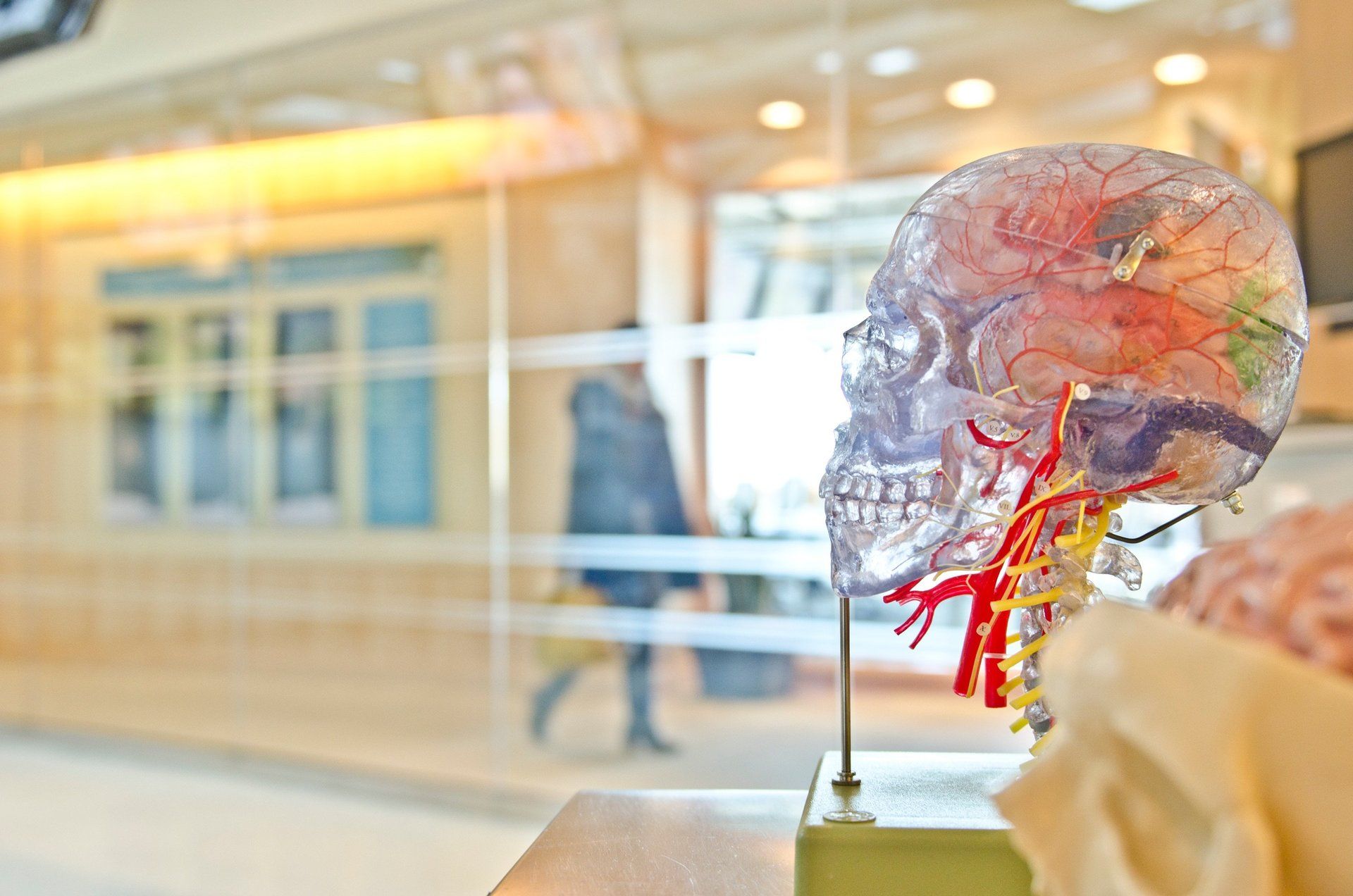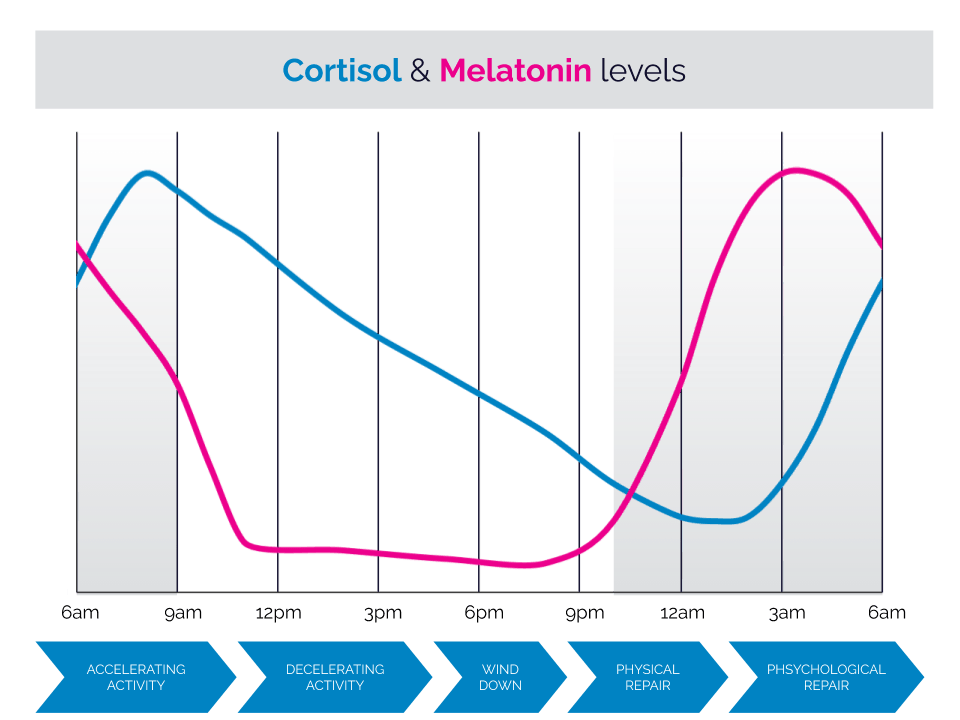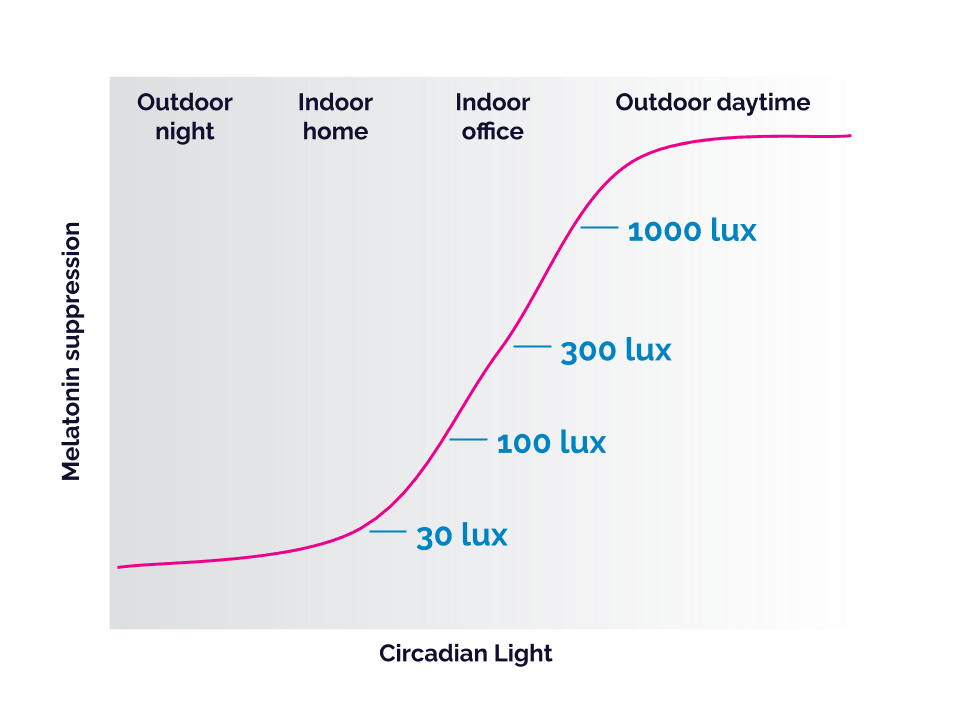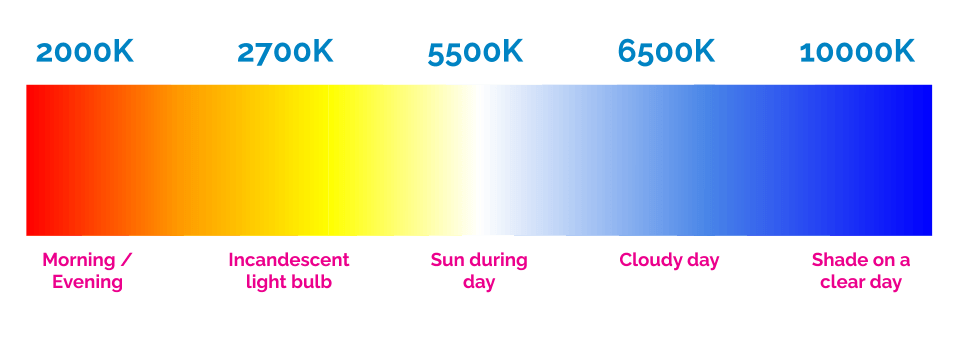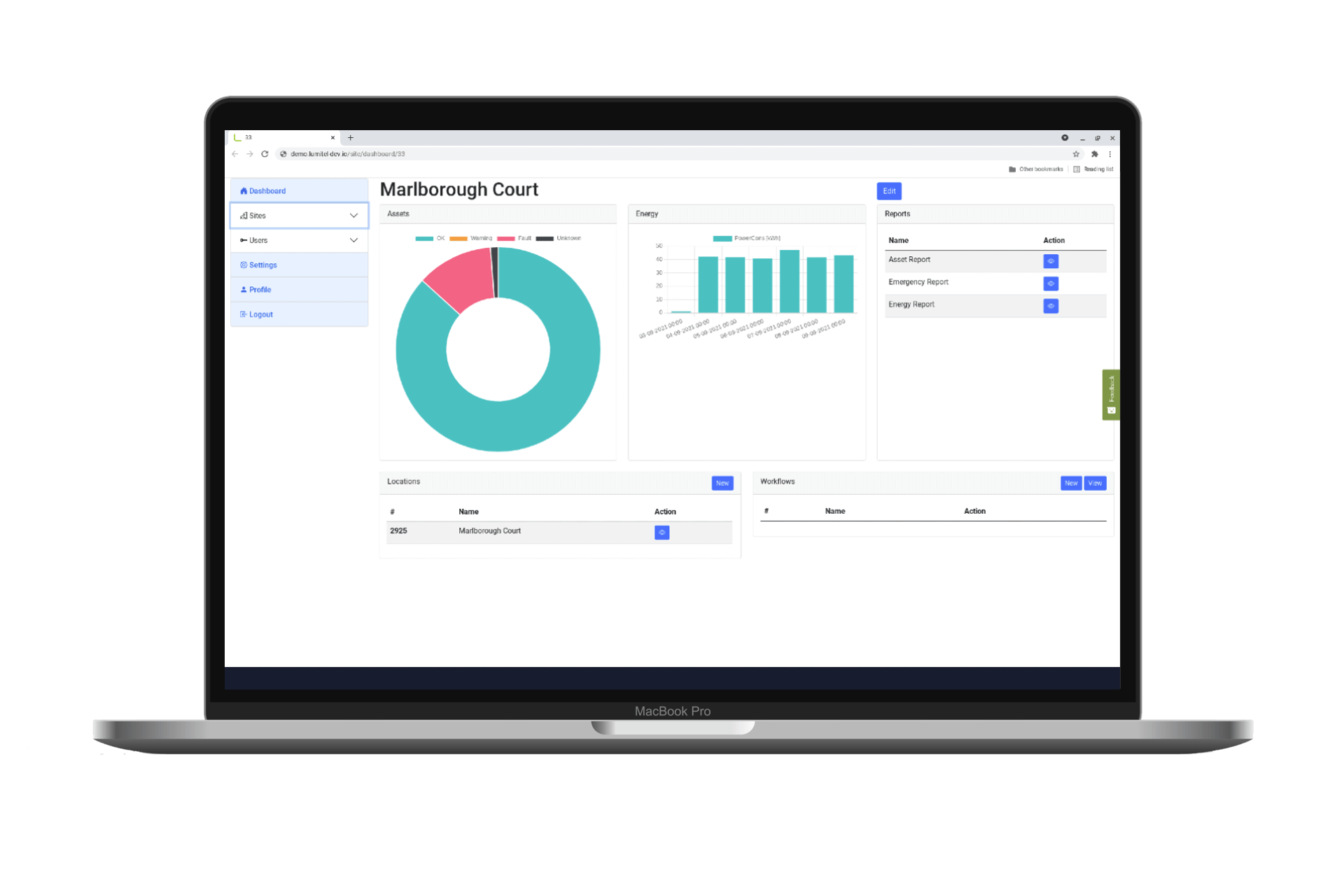How light affects
people
What is Human Centric Lighting?
Most beneficial in Healthcare
DISCOVER HEALTHCAREApplications for HCL?
HCL can be used for any application, but research suggests that it will be most effective in healthcare (first and foremost elderly care and mental healthcare), schools and offices. The results will be more significant in places where natural light is less abundant.
Although effects of Human Centric Lighting are well established in a laboratory setting, scientific research on the effectiveness in a real-life installation is still ongoing. Subjective feedback is very positive for certain applications, and indications are strong that it has a positive impact on wellbeing.
The effect on body and mind
Sunlight over a day
Ask a person what is the best quality of light and the answer is normally: daylight. However, without us realising, daylight is not a fixed and defined kind of light. It is changing continuously; varying over the course of a day, but also changed by other conditions (for example clouds). Both the intensity and the colour change over time. It starts with an orange/pink low light level in the morning, going to a bright blue-ish colour in the afternoon, back to orange and then to very low moonlight levels at night.
How to use artificial light
So, lighting does have a significant effect on people. Outdoors, it is over to the elements. However, indoors we can influence it by adapting the artificial lighting. The more an environment relies on artificial lighting, the more impact we can have. The closer to the equator, the more it is determined by the sun. This makes Northern parts of Europe (Nordics, Netherlands, North Germany, and of course the United Kingdom and Ireland) good candidates. This is the field of Human Centric Lighting.
Both the light intensity and colour of light have an effect. Where the intensity has a biological effect, the colour is more emotional. Research shows, although most is very empirical, that there is a positive effect. Scientific tests prove the effect in a laboratory setting. However, a real-life setting includes much more external environmental conditions that influence people. Nevertheless, several studies do report positive qualitative effects.
The effect is greatest in following applications:
- Healthcare
- mental health
- dementia and Alzheimer’s disease
- elderly care
- Education
- Offices
Healthcare appears to be the most suitable candidate for HCL. For one, people are there 24-hours per day. Furthermore, research shows that tailored lighting can improve measures of sleep, depression and agitation. HCL would cover a 24-hour period with stimulating light in the morning, ‘winding down’ lighting in the afternoon and relaxing, cosy light levels in the evening. At night, ‘dark’ amber lighting (without blue elements) would accommodate sleep.
The effect in education and offices is less pronounced, however the emotional aspect is more important. It can stimulate activity levels at the right times of day, especially when natural lighting is limited. During lunch time hours lighting can be dimmed for energy saving purposes. In educational settings and meeting rooms in offices it is perceived very helpful if scenes can be selected to support a certain task or activity. For example 4 scenes of lighting that stimulate: activity, focussing, relaxing and attention.
In other applications the effects are less pronounced.
For example, it is not very effective in night shifts (24/7 industries) because you can only control the lighting in less than half of the person’s day. Nevertheless, some effects have been demonstrated. Having said that, the emotional aspects of Human Centric Lighting are more subjective and can apply to any environment. In the end, the ‘quality of light’ is relevant to all situations.
How to manage it
There are many ways to use artificial lighting in Human Centric Lighting. The ‘light recipe’ is the know-how of the company supplying it. Some companies do it with ‘simple’ tunable white (mixing of warm and cool white), and others add ‘amber light’ to create a more comfortable light in a night setting. Then there are companies using RGB, RGB-W and RGB-WCW and solutions with upto 7 different channels of light to mimic the sun as closely as possible.
The right curve will be the optimisation of the combination of light intensity and light colour throughout the day. A lighting control system can control these set-points and combine them with other inputs, both from the user (for example, selecting specific lighting scenes) and the environment (for example natural light).
About the network
Are you
ready to
take control?
Get in touch!
Copyright Chess UK | All rights reserved | Security Policy | Cookies Policy | Privacy Policy | Impressum | Terms and Conditions

